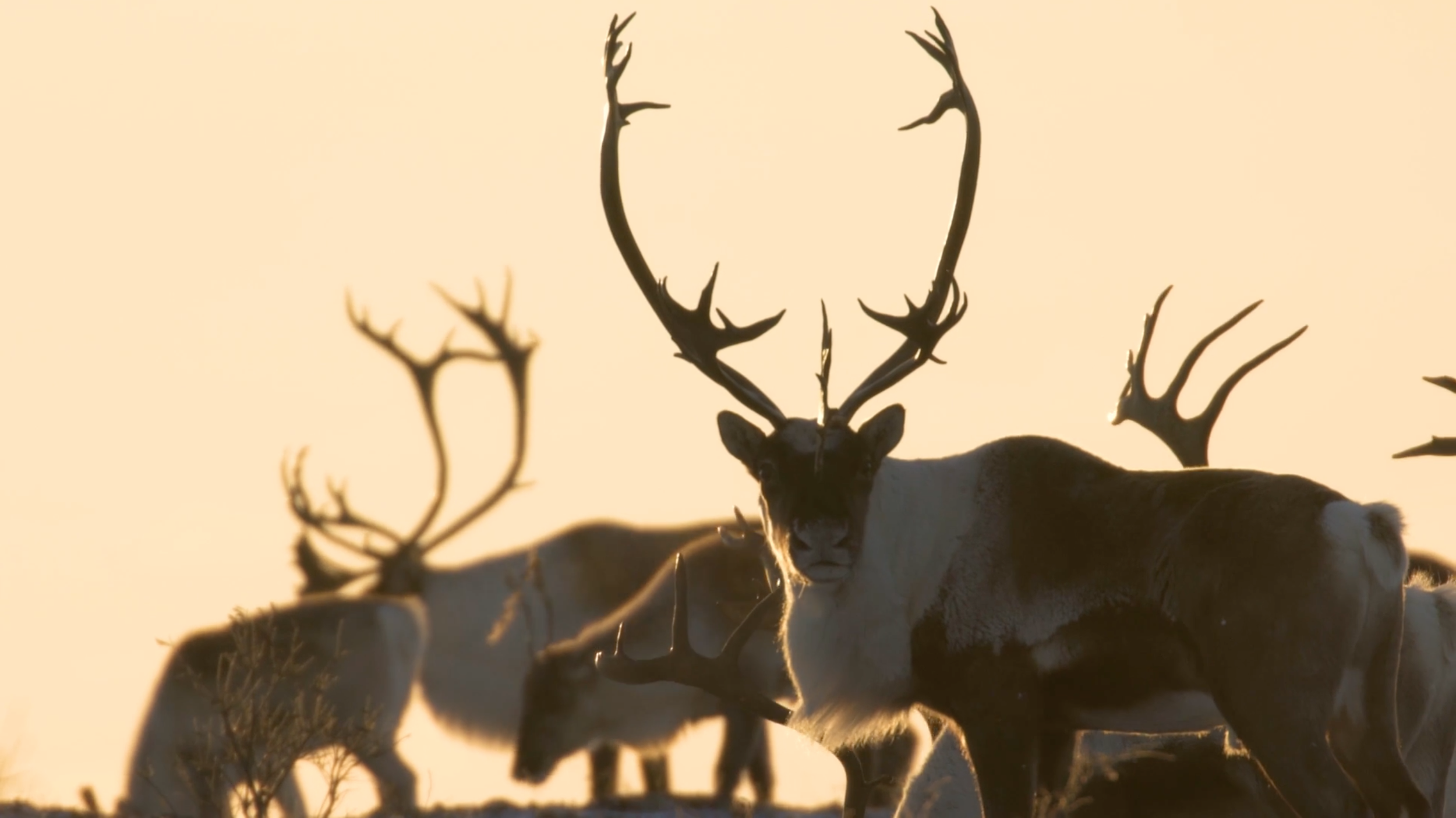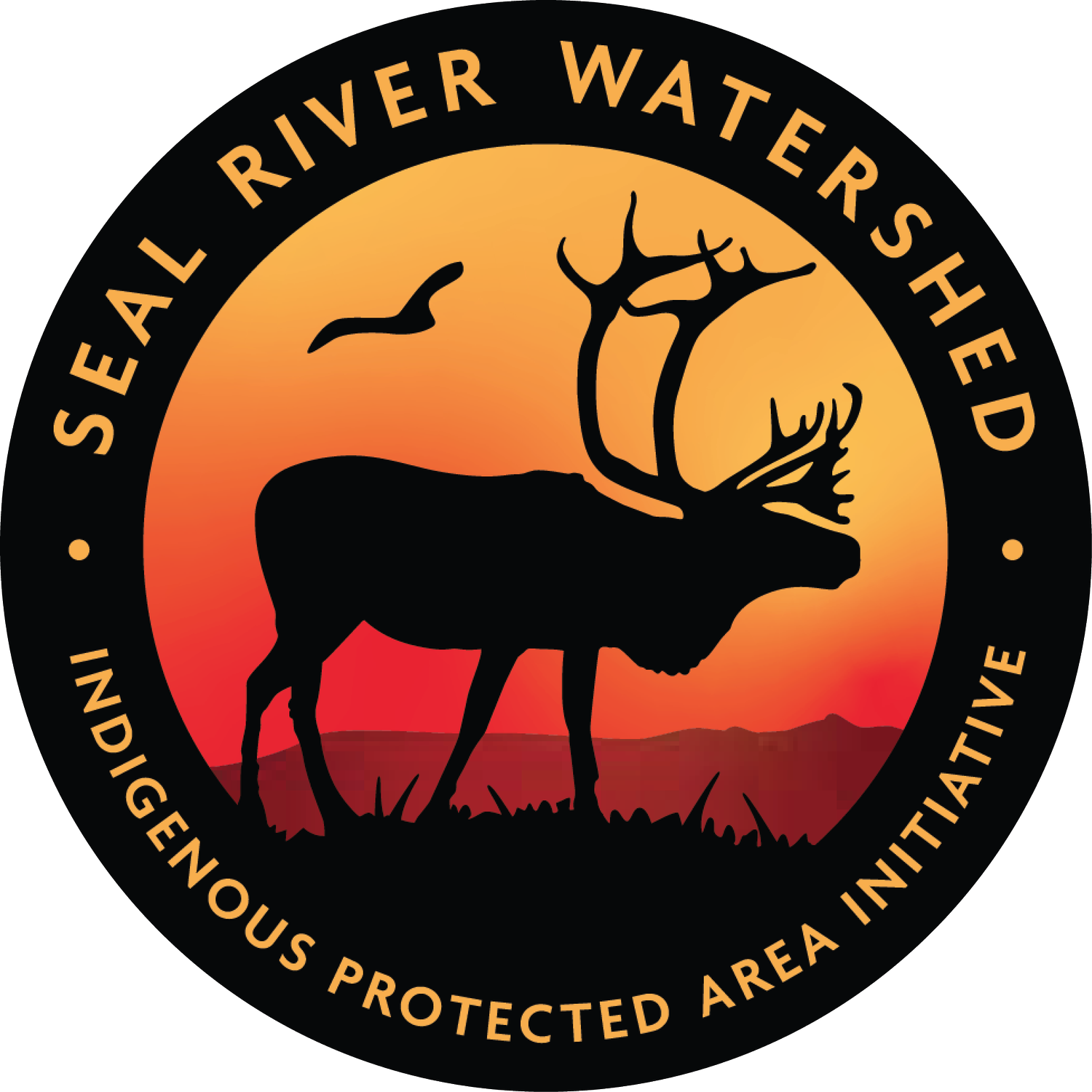
CONSERVATION VALUESThe Seal River is one of the largest intact watersheds left on the planet.
Covering 50,000 square km (an area nearly the size of Nova Scotia), this landscape encircles a realm of natural beauty with a richness of geography and ecology unparalleled in the province.
Research shows the watershed remains 99.97 per cent intact. That means an area the size of Nova Scotia is free of mining developments and permanent roads, and sustains animals, plants, boreal forest, carbon stores, and clean waters. By leaving these lands as they are, we are helping the planet.

Its path spans 260 km from its source (Shethanei Lake) to Hudson Bay, yet it is roughly 200 km from the coast that the waters are first greeted by eager and unexpected ambassadors of the ocean: harbour seals. In this location, the river’s namesake animal likely strays further from their marine environment than anywhere else on earth.

-
The Seal River Watershed is home to 400,000 caribou that travel south from Nunavut each winter–dotting the landscape and sustaining Dene, Cree and Inuit Peoples.
The Beverly herd is considered highly vulnerable while the Qamanirjuaq herd has been declining by 2% a year since 2008. Traditionally hunted by Inuit and Dene communities of present day Nunavut and northern Manitoba, these majestic animals are an irreplaceable part of the ecosystem and a spectacular representation of Canada’s wild landscape that we cannot afford to compromise.
Carving a path east through untouched subarctic forest the surrounding landscape plays host to black bear, wolf, fox and wolverine, as well as moose, beaver, otter, eagle, osprey and boreal songbirds. Swooping from cliffs along the river’s edge, cliff swallows nest here at the northern limit of their range.
The scents of spruce and lichen mingle as the landscape transitions to tundra (where the long extirpated grizzly bear is making a comeback) and to the peat rich soils of the Hudson Bay lowlands, North America’s largest wetland.
Within the Seal River region there are at least 22 known species at risk — including wolverines, grizzly bears, killer whales, olive-sided flycatchers and lake sturgeon — and at least 260 identified mammal, aquatic, bird, plant and insect species.
Polar bears come ashore in spring as the ice in Hudson Bay retreats. The bears conserve their energy in the summer sun, before making their way back to the coast of Hudson Bay to wait for the formation of winter ice. Some 3,000 Beluga whales find refuge in the Seal River estuary to breed, calve and prepare for their winter migration.
-
Seemingly endless mud and sand flats are formed by the four-meter tides which govern the Seal River’s estuary, which is designated an Important Bird Area.
On a single spring day, birders can delight in the sight of more than 3,000 Black Scoters, 1,000 white-winged Scoters, 300 Arctic Terns, 250 Tundra Swans and more than 200 Pacific Loons.
The fall migration brings thousands of High Arctic shorebirds. An August’s day can bring more than 2,000 Sandpipers, nearly 500 Hudsonian Godwits, more than 300 Dunlins and nearly 200 Semipalmated Plovers.
Those hungry shorebirds compete with thousands of waterfowl and tundra-breeding passerines, including more than 9,000 Canada Geese, 2,500 Snow Geese, nearly 900 Lapland Longspurs and nearly 600 American Black Ducks.
-
The watershed serves as a shield in the global fight against climate change. Analysis by Ducks Unlimited Canada shows the Seal River Watershed holds 1.7 billion tonnes of carbon in boreal soils, wetlands, and peatlands.
That’s equivalent to eight years’ worth of greenhouse gas emissions in Canada. And nearly 70 years’ worth of annual emissions from Canada’s passenger cars and light trucks (based on 2018 levels).
Conserving the Seal River Watershed ensures the carbon remains safely stored in the ground, instead of being released into the atmosphere and intensifying climate change. Scientists say that land stewardship approaches like this—often called nature-based climate solutions—can deliver one-third of the emissions reductions necessary to meet the Paris Climate Agreement.
-
Recognized as the “last truly wild river in Manitoba” the Seal was designated a Canadian Heritage River in 1992.
The Seal River offers an outstanding white-water canoeing and kayaking experience for the small number of adventurers willing to fly 1,000 kilometers north of Winnipeg. The challenging trip includes long sets of rapids and a boulder-strewn tidal estuary. It offers spectacular views, including 300 metre-wide eskers which extend several hundred kilometres in a north-south direction.
The Seal’s cultural heritage dates back thousands of years. Prehistoric artefacts have been found dating from the Paleo-Indian peoples of 7,000 years ago, to the Taltheili who existed from 1 C.E. to 1700 C.E.
The river also forms an important chapter in the story of a historic overland trek to the Arctic coast by European explorer Samuel Hearne, who sought the Northwest Passage for the Hudson’s Bay Company. Hern left Prince of Wales Fort, near Churchill, in February 1771 and followed the Seal River inland on foot to Shethanei Lake. There he encountered the Sayisi Dene, who assisted him on his journey.








